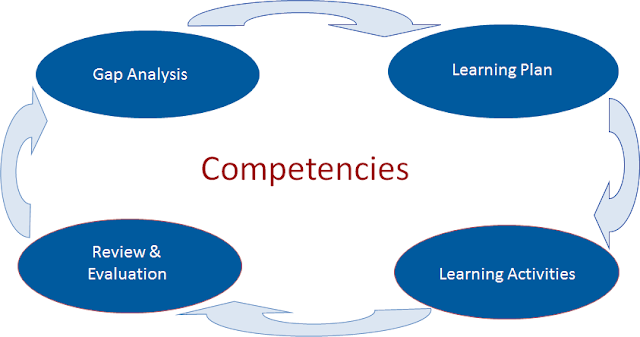This is the third in a seven part series that looks at:
Some Definitions - Making the Case for Competency-based Learning & Development
- Learning & Development: Facts, Figures & Findings
- How Competencies Support Learning & Development
- The Learning Cycle at the Individual Level
- The Learning Cycle at the Organizational Level
- Evaluating the Impact of Competency-based Learning and Development
- Implementing Competency-based Learning & Development
Using a competency-based approach has been proven to result in more efficient and effective learning and development processes, reduced costs and more productive, successful and engaged employees.
Competency is a term that describes a pattern or cluster of actions taken to achieve a result. Competencies demonstrate the following key features:
- They describe the abilities, skills, knowledge, motivations or other traits required in the job
- They are required for effective or successful performance of the job or task
- They are defined in terms of observable behaviors, and therefore can be assessed or measured.
Job Competency Profiles or models provide a comprehensive set of standards against which employees can be assessed. These standards can include not only the hard skill requirements like education and technical / professional competencies, but also the harder to measure attributes that are so important for success on the job, like the ability to operate effectively in a team environment, initiative, concern for client / customers, results achievement, etc.
Using a competency-based approach allows the organization and employee to determine the inventory of competencies the employee possesses. Comparing the employee inventory of competencies against the competencies required in a job allows for a determination of the level of fit between the employee’s competencies and those required for a job or set of jobs. Gaps between what is required as compared with what is needed in the job then allows for the identification of a learning and development plan best suited to the employee’s needs.
This process is described in more detail through the Learning Cycle.
The Learning Cycle
Whether at the individual or organizational level, learning follows the cycle shown in the diagram below. Gaps in the learning are determined, which leads to the development of plans for addressing the gaps, followed by implementation and then review and evaluation to determine whether learning has occurred and the gaps that have to be addressed in the next cycle.
At the individual level, employees can assess their competencies against those required for their own job, or for another job in which they are interested, and then take steps to acquire or improve any necessary competencies. If they do this in conjunction with their supervisors, more formalized individual learning plans can be created based on the employee’s strengths and areas for development. The plans can be implemented and progress tracked.
At the organizational level, the competencies provide the foundation for assessing the gaps between the desired skill levels required in the organization to achieve the organizational vision, mission and mandate and those currently existing among the employee population. This gap analysis information is rolled up principally from gap information gathered at the individual employee level. Based on key trends in this gap analysis, decisions can be made about investments in learning and progress in closing organizational gaps in learning can be tracked.
The next two blogs will address the learning cycle at the individual and organizational levels in more detail.
In Summary
Competencies assist in effective learning and development by identifying the behaviors, knowledge, skills and abilities that are necessary for successful performance in the job and the organization. They support learning by:
- Focusing learning on the critical competencies needed for success in the jobs and organization
- Providing standards for measuring employee performance and capabilities
- Providing the framework for identifying learning options/curriculum/programs to meet employee and organizational needs
- Supporting effective forecasting of organizational, as well as project-related learning requirements
- Providing standards for determining how well learning has occurred, both at the individual and organizational level
The next blog in this series examines the learning cycle at the individual level. Sign up to our blog’s mailing list through the form on the right-hand side to receive the rest of the series in your inbox.
HRSG is a leader in competency-based learning and development solutions and training. Contact us today to find out how we can help you.
Want to learn more? Competency-based Talent Management, or CbTM, is the best practice for defining job requirements and building effective HR programs to develop skilled, engaged and productive workforces. Download this Best Practice Guide to learn how competencies can increase workforce effectiveness and improve business practices.






Thank You for the summary provided .I got the knowledgeable information.
ReplyDeletehttp://www.jobrequirements.net/